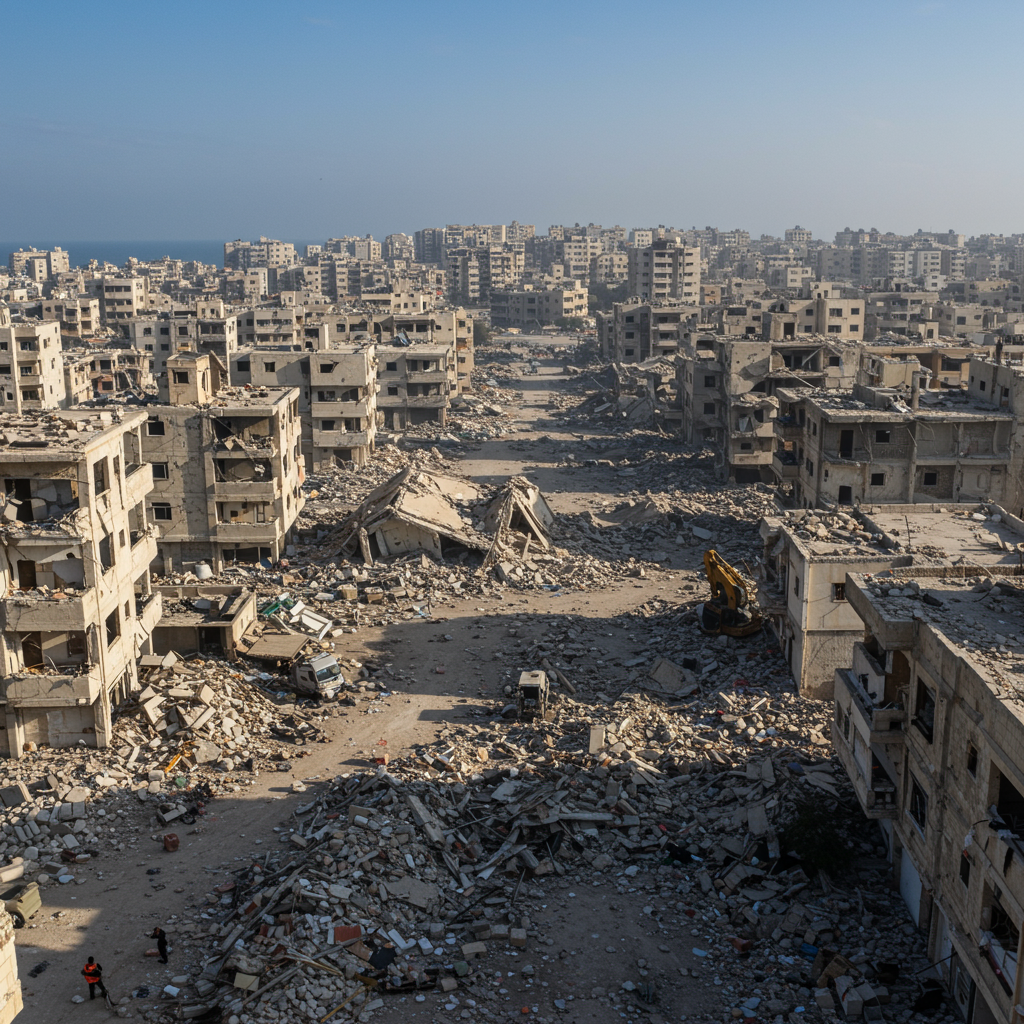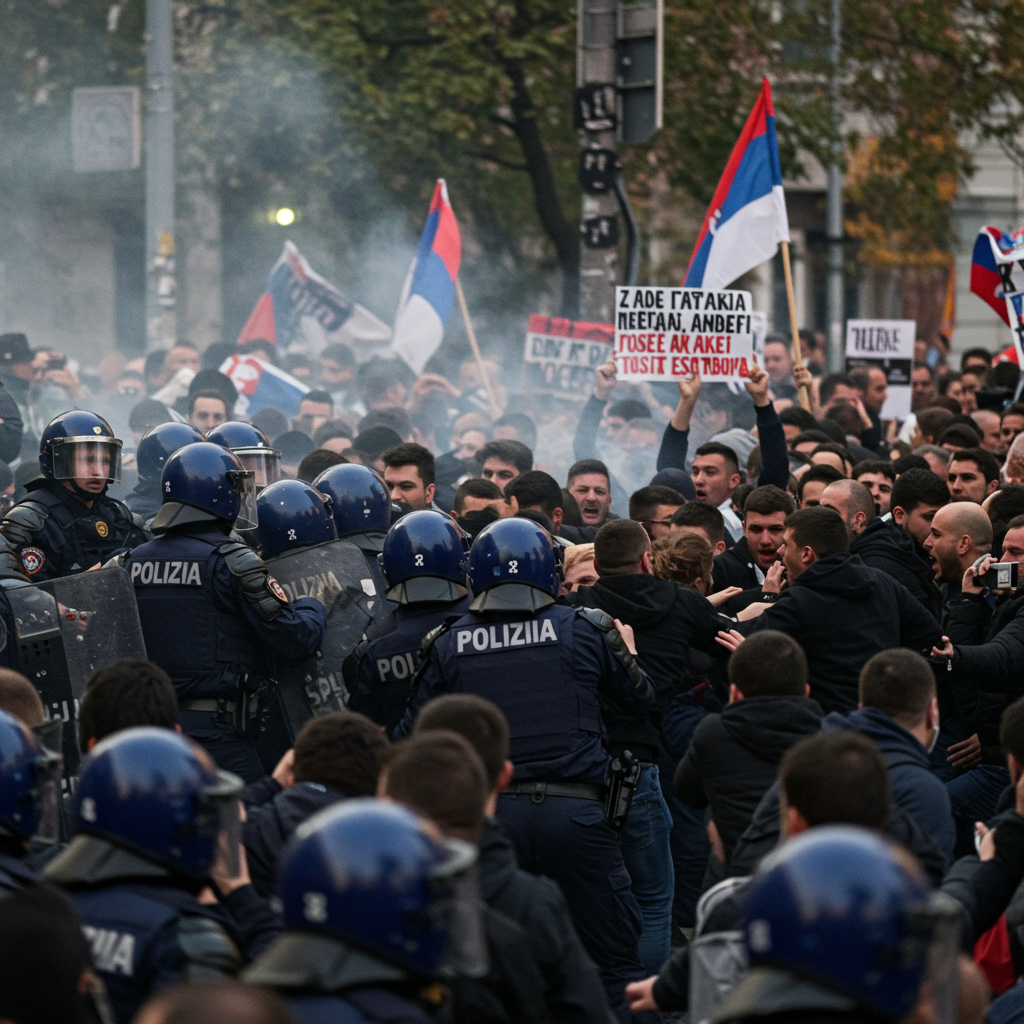Intense israeli strikes across the Gaza Strip killed at least 81 Palestinians and injured over 400 others within a 24-hour period ending Saturday midday, according to figures released by the Hamas-run health ministry. This sharp rise in fatalities highlights the ongoing humanitarian crisis gripping the besieged territory, with reports indicating that residential areas and sites sheltering displaced civilians were among those hit.
The grim toll underscores the persistent danger facing Gazan residents as the conflict enters its 21st month. Aid agencies and health officials continue to report immense challenges in reaching victims and providing necessary care amidst widespread destruction and limited access.
Devastating Strikes Hit Civilian Shelters
Multiple separate incidents contributed to the alarming death toll reported by the health ministry. One particularly devastating strike occurred near the Palestine Stadium in Gaza City. This location was being used to house displaced families seeking refuge in tents. At least 11 people, including several children, were killed in the blast, according to accounts from Al-Shifa hospital staff and eyewitnesses.
Eyewitnesses described a scene of chaos and desperation following the attack. They recounted hearing a “huge explosion” that hit a road near the stadium. The force of the blast reportedly buried many tents under sand and debris. Verified footage showed civilians and emergency crews using their bare hands and simple spades to dig through the sandy ground, desperately searching for bodies trapped beneath the rubble.
Another strike in the al-Mawasi area resulted in further casualties. Reports indicate that this attack hit both an apartment block and a tent. At least 14 people were killed in this incident, with several fatalities reported to be children. Relatives shared heartbreaking accounts of a strike in al-Mawasi that killed three children and their parents while they were asleep in their tent, asking, “What did these children do?”
Later on Saturday afternoon, the violence continued with an air strike on the Tuffah neighbourhood. This area is located near Jaffa School, another site where hundreds of displaced Gazans were sheltering. The Palestinian health ministry reported that at least eight people were killed in this strike. Tragically, five of the victims were children. A resident identified his nephews, father, and neighbors’ children among those killed, stating, “We are civilians.”
These reports emphasize the extreme vulnerability of displaced populations in Gaza. With much of the territory devastated by continuous bombardment, many residents have been forced to seek shelter in makeshift camps or crowded public buildings, which appear to remain targets of lethal force.
Conflicting Accounts and Military Claims
The Israeli military (IDF) provided statements regarding some of these incidents, offering a different perspective on the targets. Regarding the strike near the Tuffah neighbourhood, the IDF stated that it “struck a suspicious individual who posed a threat” to troops operating in the northern Gaza Strip. The military claimed that “numerous steps were taken to mitigate the risk of harming civilians” before the strike. They added that they were “unaware of injuries as a result of the strike, besides the individual struck.”
Similarly, concerning the strike near the Gaza City stadium, the IDF stated they had targeted “a suspicious individual who posed a threat.” They claimed they were “unaware of injuries as a result of the strike” to anyone aside from the intended target. These claims from the IDF often contrast sharply with the accounts of witnesses on the ground and figures reported by the Hamas-run health ministry.
Broader Context of the Ongoing Conflict
The intensified strikes come as the wider conflict in Gaza continues unabated. The current military campaign was initiated by Israel in response to the October 7, 2023, attack carried out by Hamas on Israel. That attack resulted in the deaths of approximately 1,200 people in Israel and the taking of 251 hostages.
Since the beginning of the Israeli military operation in Gaza following the October 7 attack, the territory’s Hamas-run health ministry reports that over 56,000 Palestinians have been killed. The ministry notes that over half of these fatalities are women and children. It’s important to note that these figures do not differentiate between civilians and combatants, and verifying the exact breakdown independently is extremely challenging amidst the ongoing hostilities.
In a separate but related development, the IDF announced late Saturday evening that its forces had killed Hakham Muhammad Issa al-Issa in the Sabra area of Gaza City on Friday. The IDF identified Al-Issa as a senior figure within Hamas’s military wing and a founding member. They alleged he played a “significant role in the planning and execution” of the October 7, 2023 attack on Israel. Israeli authorities described him as Head of Combat Support and Head of the Training Headquarters, claiming he led Hamas’s force build-up and trained thousands of militants. They further characterized him as one of the last remaining senior Hamas figures in Gaza involved in the October 7 operation.
Danger at Aid Distribution Points
Adding another layer to the severe humanitarian crisis, reports from other sources indicate that Palestinians seeking vital food aid have also faced lethal attacks. In one recent incident near the Netzarim Corridor, which separates northern and southern Gaza, at least 16 people were killed while waiting for aid packages. Witnesses described being fired upon by tanks, aircraft, and drones while gathered overnight.
This highlights the perilous conditions faced by desperate residents attempting to access food and supplies. The United Nations has reportedly condemned the weaponization of aid, while the Israeli military maintains that forces in the Netzarim area fired warning shots at “suspects” who approached in a threatening manner. The targeting of aid seekers adds immense pressure on humanitarian organizations operating in the enclave, who face dwindling supplies and immense logistical challenges.
The ongoing attacks, including those near shelters and potential aid sites, transform crucial humanitarian corridors into dangerous zones. With a severe hunger crisis unfolding due to blockades and limited aid entry, Palestinians are often forced to risk their lives simply to obtain basic necessities like flour and water, supplies often deemed insufficient in nutritional value by experts.
Renewed Hopes and Stalled Ceasefire Talks
Amidst the relentless violence, diplomatic efforts to broker a ceasefire and hostage release deal appear to be intensifying once more. US President Donald Trump expressed optimism, stating he was hopeful that a truce could be agreed upon within the next week. Qatari mediators, who have played a key role in previous negotiations, also voiced hope that pressure from the United States could help achieve a breakthrough.
These efforts follow a complex period of intermittent talks and violence. A previous two-month ceasefire, which began in January and was planned in three stages, collapsed in March when Israel launched fresh strikes on Gaza. The first stage of that deal did not fully materialize. Stage two was intended to include establishing a permanent ceasefire, the release of remaining Israeli hostages in exchange for Palestinian prisoners held in Israel, and the complete withdrawal of Israeli forces from Gaza.
Currently, negotiations remain stalled despite mediators reportedly stepping up their efforts. A senior Hamas official recently indicated that talks with Israel are not progressing. The core demands and conditions from both sides continue to pose significant obstacles to reaching an agreement. Hamas’s stated position is that it is prepared to free all remaining hostages in exchange for an end to the war. In contrast, Israeli Prime Minister Benjamin Netanyahu has maintained that he will only end the conflict once Hamas is disarmed and exiled, a condition Hamas rejects.
In Tel Aviv, a rally was held on Saturday evening calling for renewed efforts to secure the release of the estimated 50 remaining Israeli hostages held in Gaza. Organizers advocated for an immediate end to the fighting to bring everyone home swiftly in one phase. The pressure from hostage families remains a significant factor influencing public and political discourse in Israel regarding the conflict’s future. Reports suggest Israeli Minister for Strategic Affairs, Ron Dermer, is scheduled to visit Washington to discuss the Gaza ceasefire and other issues, signaling ongoing high-level engagement.
The confluence of intensifying violence, particularly impacting civilians and displaced populations, alongside renewed but challenging diplomatic efforts, paints a complex picture of the situation in Gaza. The heavy toll of recent strikes underscores the urgent need for a resolution to prevent further loss of life and alleviate the dire humanitarian conditions faced by the territory’s residents.
Frequently Asked Questions
Who provides the death tolls in Gaza, and how reliable are they?
The primary source for casualty figures in Gaza is the territory’s Hamas-run health ministry. While these figures provide an indication of the scale of death and injury, they do not differentiate between civilian casualties and combatants. Independent verification of these numbers is extremely difficult due to the ongoing conflict and limited access to the territory, making the exact breakdown of fatalities challenging to confirm.
What is the current status of ceasefire negotiations for Gaza?
Diplomatic efforts involving mediators like Qatar are ongoing and reportedly intensifying, with the US expressing hope for a deal soon. However, negotiations between Israel and Hamas remain stalled due to significant disagreements over key conditions, such as the terms for hostage and prisoner releases, the duration of a ceasefire, and the withdrawal of Israeli forces from Gaza. Previous ceasefire attempts have collapsed.
Why are displaced people in Gaza reportedly being killed in areas they are sheltering?
Reports indicate that Israeli strikes have hit areas designated or used as shelters for displaced civilians, including near stadiums and schools. While witnesses describe these as civilian areas, the Israeli military often states they are targeting “suspicious individuals” posing a threat to their forces and claim steps are taken to mitigate civilian harm. Conflicting accounts and ongoing violence make it difficult to independently verify specific targets and circumstances.
The situation in Gaza remains highly fluid and dangerous, with significant loss of life continuing amidst a desperate humanitarian crisis and uncertain diplomatic prospects for a lasting resolution.




